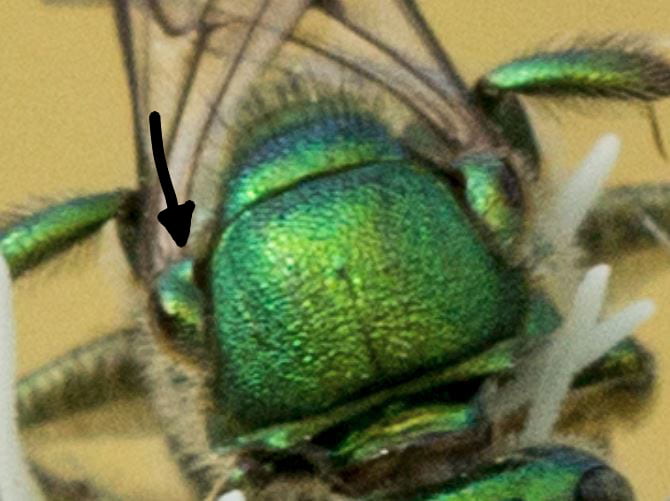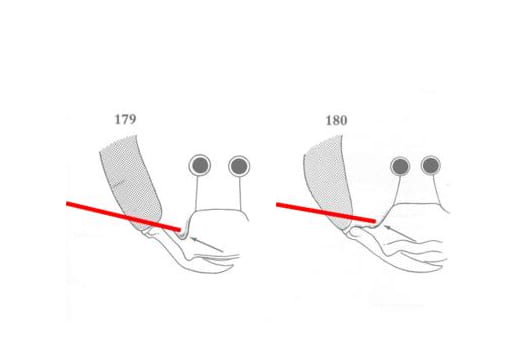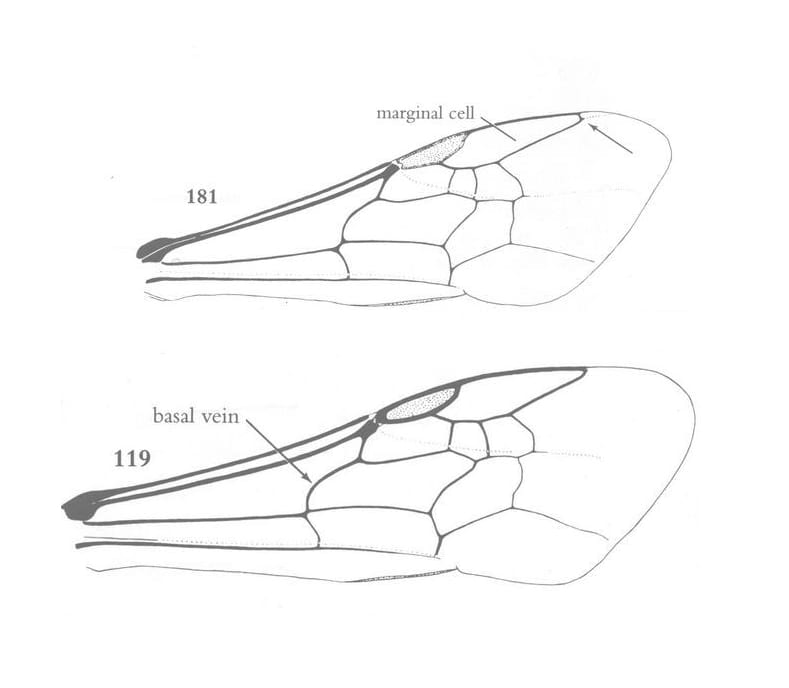Winter is coming!
Or rather, fall is quickly on its way, and with it, the first hard frost. Once you have a hard frost in your area, there will be fewer bees out flying. So I recommend to stop collecting after that date and instead start to focus on getting the samples to one of the drop off locations. I know some people in the northern reaches of Ohio have already had light frosts, so keep an eye out! (and also harvest any remaining summer vegetables in your garden so those don’t get frosted either) 😉
Drop off information:
All collectors should have gotten the information for the drop off week via direct email yesterday. If you did not get an email, please check your junk folder and email MaLisa to confirm. For those who have already responded to the drop off day survey, thank you! I will be in touch shortly with those needing additional assistance getting their kits to the drop off days.
Early Drop off locations: If you want to turn in your kits before mid-October, consider dropping off your kit to the Akron or Newark locations. Be sure to email or call the location in advance so they know you plan to drop off any specimens and can make sure someone is there to accept them.
- OSU Newark Campus: Goodell Lab in Adena Hall (contact MaLisa Spring spring.99@osu.edu)
- The Dawes Arboretum in Newark (contact Livia Raulinaitis lhraulinaitis@dawesarb.org)
- Akron Biological Field Station (contact Lara Roketenetz ldr11@uakron.edu or Dr. Randy Mitchell rjm2@uakron.edu)
What to drop off:
- Your sample box with specimens. Please write your name and county on the top and side of the box with sharpie. Please also label any additional boxes or containers if you ran out of space in your initial box.
- Signed and completed paper form that includes GPS coordinates, type of soap used, specimen archival acknowledgement, and additional contact info for parks. (first page here: https://cpb-us-w2.wpmucdn.com/u.osu.edu/dist/2/86606/files/2020/05/Bee-Survey-Instructions-1-1.pdf)
- All remaining sampling supplies, including any remaining bee bowls/paint strainers/etc.
- A copy of any permits that you acquired to sample at your site (mostly applies to people sampling at parks and preserves)
- Optional: If you are able, please consider making a donation to help with the cost of the pinning and curation supplies. Thanks to all of our successful bee collectors, we are in need of thousands of vials, pins, collection boxes, and other curatorial supplies. A donation of $5 buys a pack of pins, and $70 buys an insect drawer for long term specimen storage, so every little bit helps! Anyone can donate to the project here: https://www.giveto.osu.edu/makeagift/OnlineGivingDonation.aspx?fund=317067&gs=include
What happens after you drop off the specimens?
I want to give a brief overview of how things will hopefully go for the next few months.
- All boxes go into our freezers, where we will organize them by county
- I cross check the provided gps coordinates with appropriate county, so then we can use that location data on the labels
- We input each sample date from each kit into the database, so we can make batch labels for each sample period
- We create the sampling event labels and make duplicate labels for bycatch specimens
- We begin processing specimens! (Note: due to the ongoing pandemic we will not be having pinning parties, but can allow people to visit the lab to help sort and process specimens. Details on how you can help with this process will be forthcoming once I get more things up and running)
- We sort the specimens by taxa: bees, robberflies, hoverflies, butterflies/moths, all other flies, and all other bycatch. The bees, robberflies, and hoverflies will all be pinned. The Lepidoptera (butterflies and moths) will be placed in clear envelopes. All remaining flies and other bycatch will be stored separately to be given to other research labs to process. Select counties will have spiders delivered to Dr. Rich Bradley to contribute to the Ohio Spider Survey.
- Bees are washed, dried, fluffed, and pinned.
- More labels will be created for each individual pinned specimen.
- Once bees are pinned, then MaLisa can start the identification process. The first round of identification will be to genus for all bees. Then MaLisa will go through the harder groups and identify things to species, which tends to take more time to identify lower.
- Once things have been identified*, MaLisa will send you a collection report to let you know what we found in your kit. People who opted to get duplicates will also be notified at this time. *Note: at this time, we are unsure exactly how many bees are in the kits. If we end up with 100,000 instead of 10,000 bees, then it will take much longer to get things pinned and in turn, take longer to get everything identified. We will have a better idea once we get started processing specimens, but I do not have a solid timeline for how long it will take to get everything pinned and identified.
What about next summer?
- At this time, we are not sure if we will be doing another bowl survey next summer. I want to make sure we can process all the specimens we currently have before committing to another summer of large quantities of specimen collection. I am working on a smaller project that involves targeting specific floral specialists, but the details for that project are still in the works.
Bee facts of the week:
As I mentioned last week, I have already covered many of the common groups of bees in Ohio. However, there is one group that I missed: the bright green sweat bees! Granted, I did already cover the genus Agapostemon, but I did not go into detail about the other green bees in the Tribe Augochlorini.

The Striped Sweat bees in the Genus Agapostemon are in the Tribe Halictini, not Augochlorini. The bees of today’s post are all in the tribe Augochlorini.

The bright green sweat bees are stunning! But differentiating the different genera requires a careful eye.
The bright green bees all look rather similar from a distance. The easiest to differentiate is the genus Augochloropsis, which has as distinctly metallic color on bean shaped tegula (imagine a shoulder pad right above the wing), whereas the other two genera in Ohio (Augochlora and Augochlorella) have brown and oval tegulas. Augochloropsis is also a bit larger than the latter two, similar in size to the Agapostemon genus.

In this case, the tegula have a little bend and are mostly metallic, making this the genus Augochloropsis.
Differentiating Augochlora from Augochlorella can be a bit more tricky. For example, see the image below and try to guess which is which.
The key difference between the two genera is how the marginal cell meets the edge of the wing (truncate/bent or at a point) and also the shape of the face.

Comparing face shapes (where the lateral margin of clypaeus meets the parocular area): Augochlora on the left and Augochlorella on the right. Images from Discoverlife.org

To compare the marginal cells, look closely where the end of the cell meets the edge of the wing. Is it truncated (bent) or does it meet at a point? The top is truncated, which indicates it is Augochlora. The bottom meets at a point, which is consistent with Augochlorella. Images from Discoverlife.org
Anyways, there are some nitty gritty ID tips for the tricky green bees. Aren’t you glad I am going to be helping with all the bee IDs for this project?
Check out more details about bee taxa in our Bees of Ohio field guide.
- Similar to last week with the bee facts, I am going to take a break on the bycatch posts. The following groups have already been covered, so feel free to review! Parasitic wasps, hoverflies, crickets, earwigflies, ants, skippers, isopods, damselflies, robberflies, spiders, chipmunks 😉, leafhoppers, thrips, crane flies, snipe flies, long legged flies, springtails, and sawflies.
And that is all I have! Please be sure to check your email and respond to the drop off survey to figure out when/where to drop off your specimens.
Best wishes,
MaLisa

You are the best!
Haha, thanks! Hopefully these have been entertaining.
Agree!
/Users/catherinegbroun/Desktop/IMG_0480.HEIC
I noticed a small dragonfly in my last collection.
Oh cool! For some reason the website doesn’t allow people to attach images, but you can put it on iNaturalist if you want me to confirm the ID. Otherwise I will get to it when I go through sorting the specimens 😀